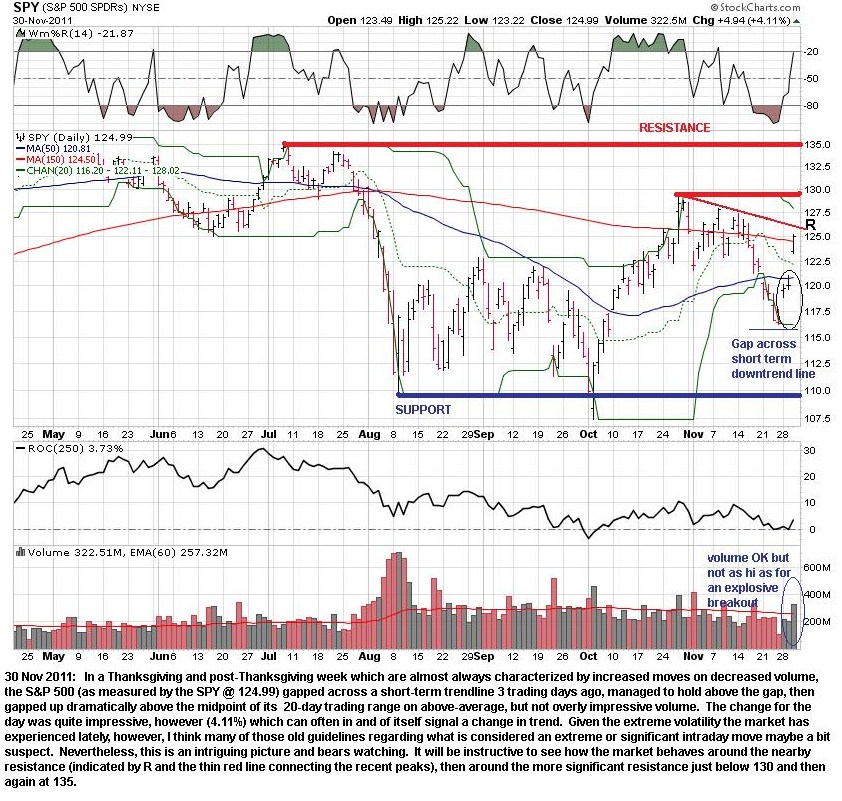S&P 500 (SPY @ 124.99) gaps across short term trend line then to the midpoint of its 20-day trading range on above average but unimpressive volume.

Assessment: sell signal remains in effect, but watch closely. Buy stop at 128.02 ( 20-day high).
Assessment: sell signal remains in effect, but watch closely. Buy stop at 128.02 ( 20-day high).
